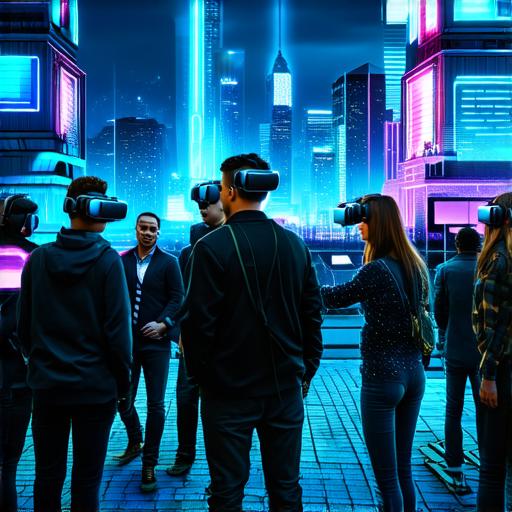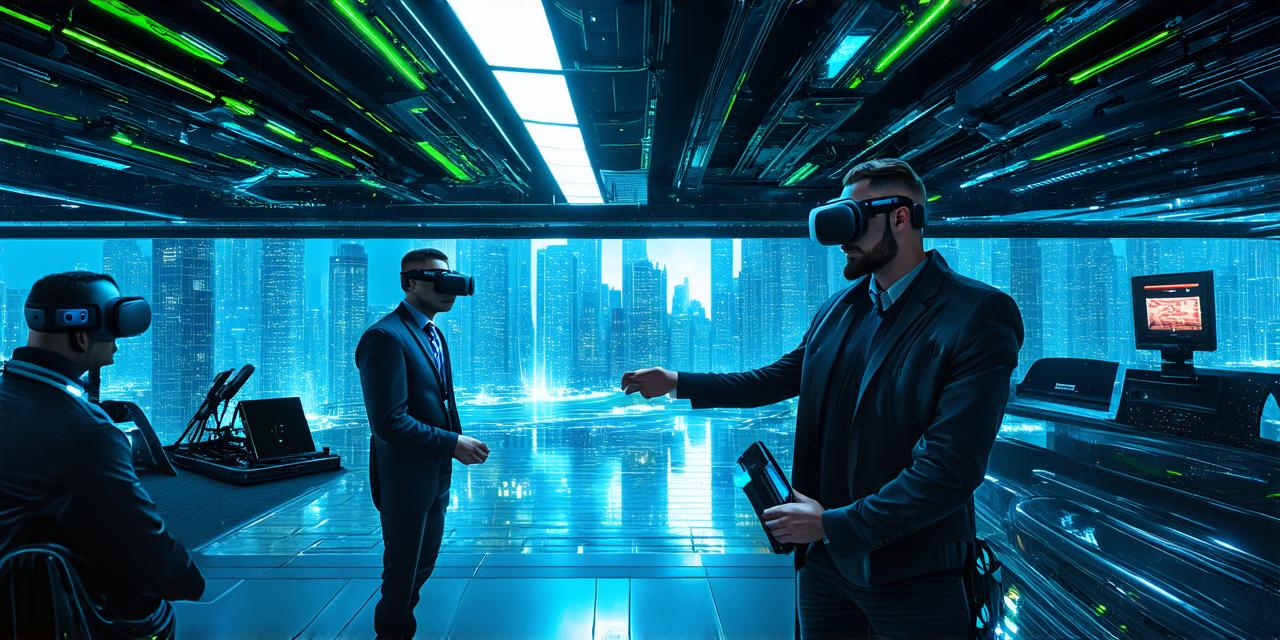Introduction

Virtual reality is a computer-generated simulation that creates an artificial environment where users can interact in real-time.
This technology was first introduced in the 1960s but has only recently gained widespread acceptance due to advancements in hardware and software. VR has become increasingly accessible, with more affordable devices and easier-to-use applications.
The Growth of Virtual Reality
Virtual reality has seen exponential growth in recent years, with the global market size expected to reach $236.1 billion by 2027. The main driving factors behind this growth are the advancements in technology and the growing demand for immersive experiences across various sectors.
Industrial Applications of Virtual Reality
Virtual reality has already transformed several industries, including gaming, education, healthcare, and entertainment. In gaming, VR offers a highly immersive experience that allows players to feel like they are part of the game world.
This technology is also being used in training simulations for military personnel, surgeons, and pilots, allowing them to practice their skills in a safe environment.
Education
Education is another industry that has embraced virtual reality. With VR, students can take virtual field trips, explore historical events, and even learn foreign languages through immersive experiences. This technology also allows for more interactive and engaging learning experiences, which can improve retention and comprehension rates.
Healthcare
Healthcare is another sector that is rapidly adopting virtual reality technology. With VR, patients can undergo therapy sessions in a simulated environment, reducing the need for physical treatments. Virtual reality has also been used to treat phobias and anxiety disorders by creating customized simulations that trigger these conditions.
Virtual Reality in Entertainment
Virtual reality is transforming the entertainment industry by offering immersive experiences that were previously unimaginable. With VR, users can attend concerts, movies, and sports events from the comfort of their homes. This technology also allows for more interactive and engaging experiences, such as virtual escape rooms or immersive adventure games.
The Impact on Society
Virtual reality has the potential to change society in significant ways. For one, it can revolutionize the way we interact with each other and our environment. With VR, we can communicate with people from all over the world, creating a more globalized society. Virtual reality can also be used for environmental education, allowing people to experience the effects of climate change or deforestation in an immersive way.
Virtual Reality and Social Isolation
One potential downside of virtual reality is that it can contribute to social isolation. People who spend too much time in virtual worlds may become disconnected from the real world, leading to feelings of loneliness and depression. This is particularly concerning for younger people who are already at risk of social isolation due to social media and other digital technologies.
Virtual Reality and Mental Health
Mental health is another area where virtual reality can have both positive and negative impacts. While VR has been used to treat anxiety disorders, it’s essential to ensure that these treatments are carefully monitored and regulated. There’s also a risk that people may become addicted to virtual worlds, leading to mental health issues such as addiction or substance abuse.
Case Studies
One example of the positive impact of virtual reality is the use of VR in therapy for people with PTSD. In one study, participants who underwent therapy using VR showed significant reductions in anxiety and depression compared to those who received traditional therapy. This technology can also be used to treat phobias, such as arachnophobia or claustrophobia, by exposing patients to their fears in a controlled environment.
Another example of the impact of virtual reality is the use of VR in education. In one study, students who learned through VR showed significant improvements in retention and comprehension rates compared to those who learned through traditional methods.
Conclusion
Virtual reality is an exciting technology that has the potential to transform society in significant ways. While there are some potential downsides, such as social isolation and mental health risks, these can be mitigated through careful regulation and monitoring. As virtual reality continues to grow, it’s crucial to ensure that it’s used responsibly and ethically to create a better future for all.
FAQs
Virtual reality has both positive and negative impacts on mental health. While it can be used to treat anxiety disorders and phobias, there’s also a risk that people may become addicted to virtual worlds, leading to mental health issues such as addiction or substance abuse.
Virtual reality can be used to treat anxiety disorders, PTSD, and phobias. For example, participants who underwent therapy using VR showed significant reductions in anxiety and depression compared to those who received traditional therapy. This technology can also be used to expose patients to their fears in a controlled environment.
Virtual reality has the potential to revolutionize education by offering immersive experiences that were previously unimaginable. With VR, students can take virtual field trips, explore historical events, and even learn foreign languages through immersive experiences. This technology also allows for more interactive and engaging learning experiences, which can improve retention and comprehension rates.
One potential downside of virtual reality is that it can contribute to social isolation. People who spend too much time in virtual worlds may become disconnected from the real world, leading to feelings of loneliness and depression. This is particularly concerning for younger people who are already at risk of social isolation due to social media and other digital technologies.
It’s crucial to ensure that virtual reality is used responsibly and ethically by carefully regulating and monitoring its use. This includes ensuring that people who use VR are aware of the potential risks and taking steps to prevent addiction or overuse. It’s also essential to consider the impact of VR on different communities and populations, such as children and vulnerable individuals, and take steps to protect their rights and well-being.
